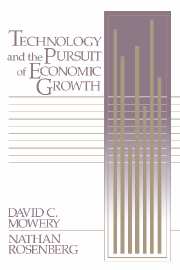Book contents
- Frontmatter
- Contents
- Preface
- Part I Introduction
- Part II The development of the institutional structure, 1860–1940
- 2 The growing role of science in the innovation process
- 3 The beginnings of the commercial exploitation of science by U.S. industry
- 4 The U.S. research system before 1945
- 5 The organization of industrial research in Great Britain, 1900–1950
- Part III The development of the postwar system, 1940–1987
- Part IV New environment, new research organizations
- Bibliography
- Index
4 - The U.S. research system before 1945
Published online by Cambridge University Press: 22 March 2010
- Frontmatter
- Contents
- Preface
- Part I Introduction
- Part II The development of the institutional structure, 1860–1940
- 2 The growing role of science in the innovation process
- 3 The beginnings of the commercial exploitation of science by U.S. industry
- 4 The U.S. research system before 1945
- 5 The organization of industrial research in Great Britain, 1900–1950
- Part III The development of the postwar system, 1940–1987
- Part IV New environment, new research organizations
- Bibliography
- Index
Summary
As we noted in the preceding chapters, the expansion of the American economy during the late nineteenth and early twentieth centuries combined with innovations in transportation, communications, and production technologies to yield manufacturing operations of unprecedented scale. The materials-analysis and quality-control laboratories that were established within many of these factories were among the first industrial employers of scientists and research personnel. Over time, these plant-level laboratories expanded and were supplemented by the foundation of central laboratories devoted to longer-term research. Although the development of much of the original testing and materials-analysis research was a response to changes in the structure of production, the expansion and elaboration of these activities reflect changes in the organizational structure of the firm. The development of these research facilities was associated with changes in the structure of the parent firm that expanded and diversified its activities and products and substituted intrafirm control of these activities for market control.
These developments transformed the processes of invention and innovation within American manufacturing during the early twentieth century. Formerly carried out largely by inspired individuals, the process of innovation increasingly took place in research facilities under the control of manufacturing firms. Schumpeter argued that “innovation is being reduced to routine. Technological progress is increasingly becoming the business of teams of trained specialists who turn out what is required and make it work in predictable ways. The romance of earlier commercial adventure is rapidly wearing away” (1954, p. 132).
- Type
- Chapter
- Information
- Technology and the Pursuit of Economic Growth , pp. 59 - 97Publisher: Cambridge University PressPrint publication year: 1989
- 3
- Cited by



